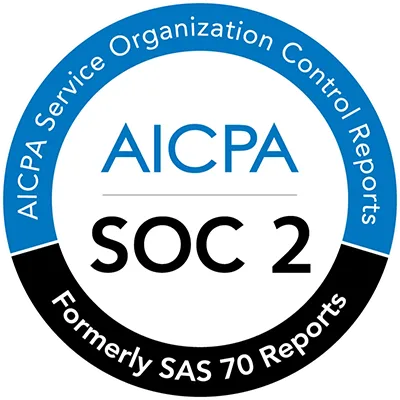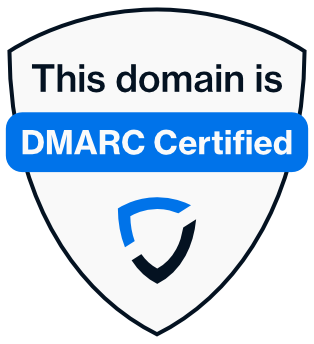Blog article
- 8 minutes read

- Kiara Saloojee
- DMARC Enthusiast
SSO: Enhancing security & efficiencies for modern businesses
As cyberattacks increase, businesses are focusing on effective strategies to enhance their defenses. One approach gaining widespread adoption is Single Sign-On (SSO), which improves security by strengthening authentication processes.

Organizations face challenges such as rising cyberthreats, decreased productivity, and user frustration from complex login systems. These issues lead to downtime and operational complications.
Last year, the Cybersecurity & Infrastructure Security Agency (CISA) recommended SSO as an effective solution to boost efficiency, streamline system access, and enhance cybersecurity for businesses of all sizes.
More companies are moving away from traditional password-based systems, which are vulnerable to breaches. With the growth of cloud services and remote work, the demand for SSO keeps increasing; last year, it was reported that 55% of businesses use SSO, with the market projected to reach $12.24 billion by 2032—an increase of over $8 billion from 2023. Discover how SSO can upgrade your organization’s cybersecurity and user experience.
Single Sign-On (SSO): Definition & basics
What is SSO?
Single Sign-On (SSO) allows users to access multiple systems and applications using a single set of login credentials. For example, signing into Gmail allows access to YouTube and Google Workspace without requiring separate logins for each.
How does SSO work?
When a user logs into an application, they are redirected to the SSO system, called the Identity Provider (IdP), to verify their identity. Users authenticate using credentials such as a username and password or biometrics.
If the credentials are correct, the IdP creates a secure token, which is sent back to the application to confirm the user’s identity. That token allows access to other connected apps without additional logins as long as the session remains active.
Common protocols & standards
- Security Access Markup Language (SAML): Redirects users to the IdP for verification and sends a confirmation message back to the application, enabling login.
- Open Authorization 2.0 (OAuth 2.0): An authorization framework that allows applications to access user data via tokens without sharing passwords.
- OpenID Connect (OIDC): Enhances OAuth 2.0 by adding an authentication step to confirm identity using an ID token.
- Kerberos: A popular authentication protocol that employs digital tickets to prove identification, allowing users to access services without multiple logins.
Importance of SSO
With businesses using an average of 371 applications in 2023, managing multiple credentials poses both productivity and security challenges. Here’s what your business can expect after implementing Single Sign-On (SSO).
Advantages of SSO
- Boosted productivity: Employees log in once to access tools, saving time and enhancing efficiency.
- Improved security: SSO strengthens security by centralizing authentication and reducing entry points for attackers.
- Enhanced user experience: SSO simplifies the login process, allowing users to access multiple applications seamlessly. In 2023, 88% of organizations that implemented SSO reported satisfaction with it.
Risk reduction with SSO
- Simplified offboarding: Removing a user from the IdP automatically revokes access to company tools.
- Reduced compliance risks: Centralized authentication helps enforce consistent security measures, aiding regulatory compliance.
- Resource optimization: Failing to implement SSO leaves businesses vulnerable to cyberattacks, which can be costly. The global average cost of a data breach was $4.88 million in 2024. SSO is a proactive and cost-effective solution.
But, 52% of businesses using SSO in 2023 found it lacking on its own. For added protection, consider pairing SSO with Multi-Factor Authentication (MFA) and Domain-based Message Authentication, Reporting, and Conformance (DMARC).

Is SSO right for your organization?
To determine if SSO is right for your business, ask:
- Are employees using multiple applications, increasing the risk of weak passwords?
- Are password resets consuming IT resources?
- Do you manage sensitive data?
- Is your business growing?
If you answered “yes” to any of these, Single Sign-On (SSO) will benefit your business’s cybersecurity. Centralizing logins reduces the risk of weak or reused passwords, the leading cause of account compromises in the U.S. in 2024, accounting for 35% of cases.
Risks of not implementing SSO
- Increased human error: Employees are more likely to mismanage passwords without centralized authentication, leaving systems vulnerable. In 2023, 59% of Chief Technology Officers (CTOs) identified human error as their top cybersecurity threat.
- User resistance: Complex login processes reduce tool adoption and harm productivity.
- Shadow IT threats: Employees frustrated by multiple logins may use unauthorized tools, introducing vulnerabilities and non-compliance risks. In 2023, 96% of employees reported dissatisfaction with their company’s tools.
Sendmarc SSO integrations
With Sendmarc’s SSO integrations, managing access to the Sendmarc Portal is straightforward. You can use your existing SSO provider to simplify the management of multiple logins. Here’s a look at the SSO integrations that Sendmarc’s DMARC management platform offers:
- Okta: Sendmarc integrates with Okta for centralized sign-ins and access control, allowing for seamless use across applications.
- Google Workspace: With Google Workspace, users can log in with their Google accounts for a secure, convenient experience.
- Microsoft Entra/365: Microsoft Entra/365 is ideal for teams using Teams, Outlook, and other Microsoft services.
Enhance your business’s cybersecurity
With cyberthreats on the rise, outdated login systems no longer meet modern security needs. Integrating with SSO providers like Okta, Google Workspace, and Microsoft Entra/365 ensures quick, secure logins—so your team can focus on what really matters.
But Single Sign-On (SSO) isn’t the whole story. Ev Kontsevoy, CEO at Teleport, stated in June, “SSO does offer considerable convenience, but unauthorized access to one individual’s credentials exposes every platform and service for which that individual has privileges. Without additional defenses, SSO alone does not thwart identity-based attacks.”
That’s why your company should complement SSO with other cybersecurity measures to mitigate threats like social engineering and phishing. DMARC can enhance protection and easily integrate with SSO. Combining solutions provides your business with more comprehensive security.
That’s where Sendmarc steps in. Learn how Sendmarc’s DMARC management platform can enhance your company’s email security.






